Stackpole books by Dave Hughes
Pocketguide to Western Hatches
Nymphs for Streams and Stillwater
Trout Flies
Handbook of Hatches, 2nd edition
Reading Trout Water, 2nd edition
Wet Flies, 2nd edition
Trout from Small Streams, 2nd edition
An Anglers Astoria, 2nd edition
Trout Rigs and Methods
Fly Fishing Basics
Taking Trout
Tackle and Technique
Tactics for Trout
Strategies for Stillwater
Big Indian Creek
With Rick Hafele and Skip Morris:
Tactics for Trout
Seasons for Trout
Essential Trout Flies
To the memory of David Detweiler, longtime friend and president of Stackpole Books, who shared trout waters, trout fishing, and books about both.
19472014
Published by Stackpole Books
An imprint of Globe Pequot
Trade Division of The Rowman & Littlefield Publishing Group, Inc.
4501 Forbes Boulevard, Suite 200, Lanham, Maryland 20706
Distributed by NATIONAL BOOK NETWORK
800-462-6420
Copyright Dave Hughes
Photos by Alan Wycheck and Dave Hughes unless otherwise credited
All rights reserved. No part of this book may be reproduced in any form or by any electronic or mechanical means, including information storage and retrieval systems, without written permission from the publisher, except by a reviewer who may quote passages in a review.
British Library Cataloguing in Publication Information available
Library of Congress Cataloging-in-Publication Data available
ISBN 978-0-8117-1969-8 (paperback)
ISBN 978-0-8117-6612-8 (e-book)
 The paper used in this publication meets the minimum requirements of American National Standard for Information SciencesPermanence of Paper for Printed Library Materials, ANSI/NISO Z39.48-1992.
The paper used in this publication meets the minimum requirements of American National Standard for Information SciencesPermanence of Paper for Printed Library Materials, ANSI/NISO Z39.48-1992.
Printed in the United States of America
INTRODUCTION TO THE SECOND EDITION
T he first edition of Essential Trout Flies was inspired by a fishing trip to Hartenstein Lake in the Colorado Rockies with author Ed EngleTying Small FliesJudith Schnell, then editor and now publisher at Stackpole Books, and the late David Detweiler, longtime president of Stackpole, to whom this book is dedicated. I waded out deep to stand on a boulder far from shore, and caught an occasional passing trout from my pelagic stance. David waded out to the next boulder over, separate from me by a longer fly cast than Id ever be able to make. He didnt enjoy the same sort of luck.
I was able to take just one or two cruising trout on each fly, then had to change it out, go to something else, catch another one or two, change again when that one began to fail. Youve had that happen to you. Every time I danced a trout David would call over, What did you hook it on? Id call the name of the fly back to David, assuming hed just tie that pattern on, catch a trout or two of his own. It didnt happen.
When the trout quit cruising and it became time to wade back to shore, I joined David and asked to see his fly boxes. He didnt fish for trout often. He had just one. It contained none of the flies Id named. But the flies Id used were the sort that I thought should be in any essential selection: Parachute Adams, Olive Woolly Bugger, Pheasant Tail Flashback, on and on as the day and the trout demanded.
From that day, on a beautiful lake surrounded by sunstruck mountains in the Colorado Rockies, arose the idea for a pared-down selection of essential trout flies that would cover a broad spectrum of trout-fishing situations. Such a selection would not include exact imitations for every nit or gnat one might ever encounter. But it could be carried easily, in two or at most three light fly boxes, and they would hold flies that would catch trout almost all of the time, almost anywhere in the world. With such a selection, a person who fished for trout somewhat casually, as David did, would always be out there with flies that worked. As important, an angler who fished for trout moderately, or even extensively as I do, could be a lot less burdened without sacrificing any trout.
Hence the first edition of this book was born.
The list of those essential trout flies, and therefore the pattern styles selected for this second edition, have changed in the fifteen years since the first edition. Some old styles, either not often used or found not as pleasing to trout as they used to be, have been dropped. Many more new styles, tied with new materials and tying techniques available now, or found necessary to please trout that seem to be more demanding than they used to be, have been added.
Im pretty certain that the selection of flies listed in this new edition of Essential Trout Flies will improve your own fishing, as it has mine.
Dave Hughes
Portland, Oregon
February, 2017
Part 1 Learning to Tie Trout Flies
Y ou can, of course, buy all the flies youll ever need to catch all the trout you desire to catch. If your fishing is limited to a couple of weekends, or a short week vacation, each year, that might be the cheapest and most logical thing to do. If you fish much more than that, and have time to tie, youll benefit greatly from tying your own flies. No matter how many days each year you fish, youll always find satisfaction in catching trout on flies that youve tied yourself.
The first part of learning to tie is to create a space in which to do it. That might be as simple as a sewing basket filled with minimal tools, hooks, and materials, and a clean, well-lighted kitchen table or desk top on which to spread them for the moments when they are in use. It might, at the opposite end of the spectrum, be an entire room or even basement filled with a vast expansion of the same tools, hooks, and materials. Most likely your place to tie will land somewhere between the two extremes: perhaps a desk with a set of drawers and a bookshelf above it for fly-tying references. If it can be permanent, that would be perfect.
Whatever your setup, organize things so you can find them easily, and as those things begin to expand, label them so you know where they reside in your space. One way to calculate the need for some new tool or material is the equal need for a new fly to be tied with it. When you require something specific, thats the moment to add it to your shopping list.
When tying, lay out the hooks, tools, and materials for the fly on which youre working, all near at hand. If youre tying by the half dozen or full dozen, which you should, prepare enough materials for that number before you begin constructing the first fly.
The most important skill in trout fly tying is thread control, made much easier by the use of a thread bobbin. Youll progress faster if you first learn how much tension a particular thread will withstand, so you can tie close to that maximum while rarely breaking it. Youll tie neater flies if you take the minimum number of thread turns needed to secure a material to the hook, avoiding thread buildup. Be sure to leave space for the head of each fly.
Strive for perfection, but dont obsess over it, at least at first. Trout arent going to grade your efforts. Theyre just looking for something swimming in the water or floating on top of it that looks alive and good to eat. If your first flies have clobbered up heads or a few fibers sticking out in wrong directions, it might make them look even more alive to a hungry trout.
Next page

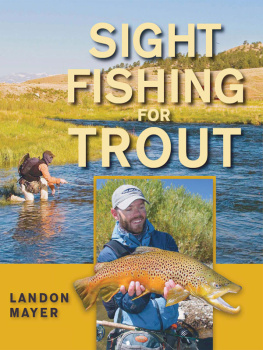
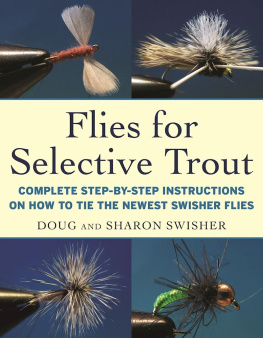

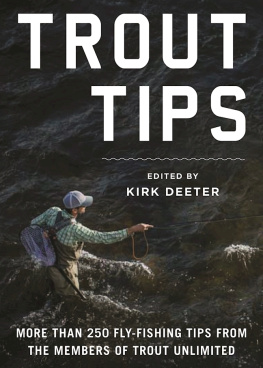
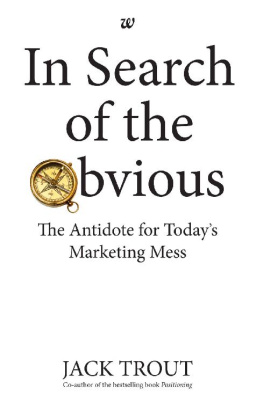

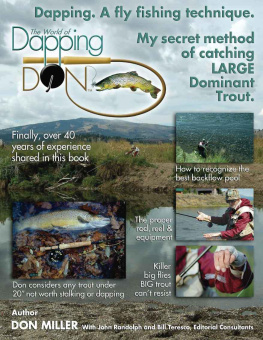
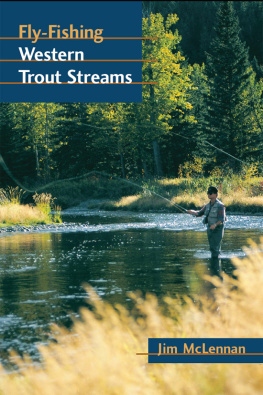

 The paper used in this publication meets the minimum requirements of American National Standard for Information SciencesPermanence of Paper for Printed Library Materials, ANSI/NISO Z39.48-1992.
The paper used in this publication meets the minimum requirements of American National Standard for Information SciencesPermanence of Paper for Printed Library Materials, ANSI/NISO Z39.48-1992.